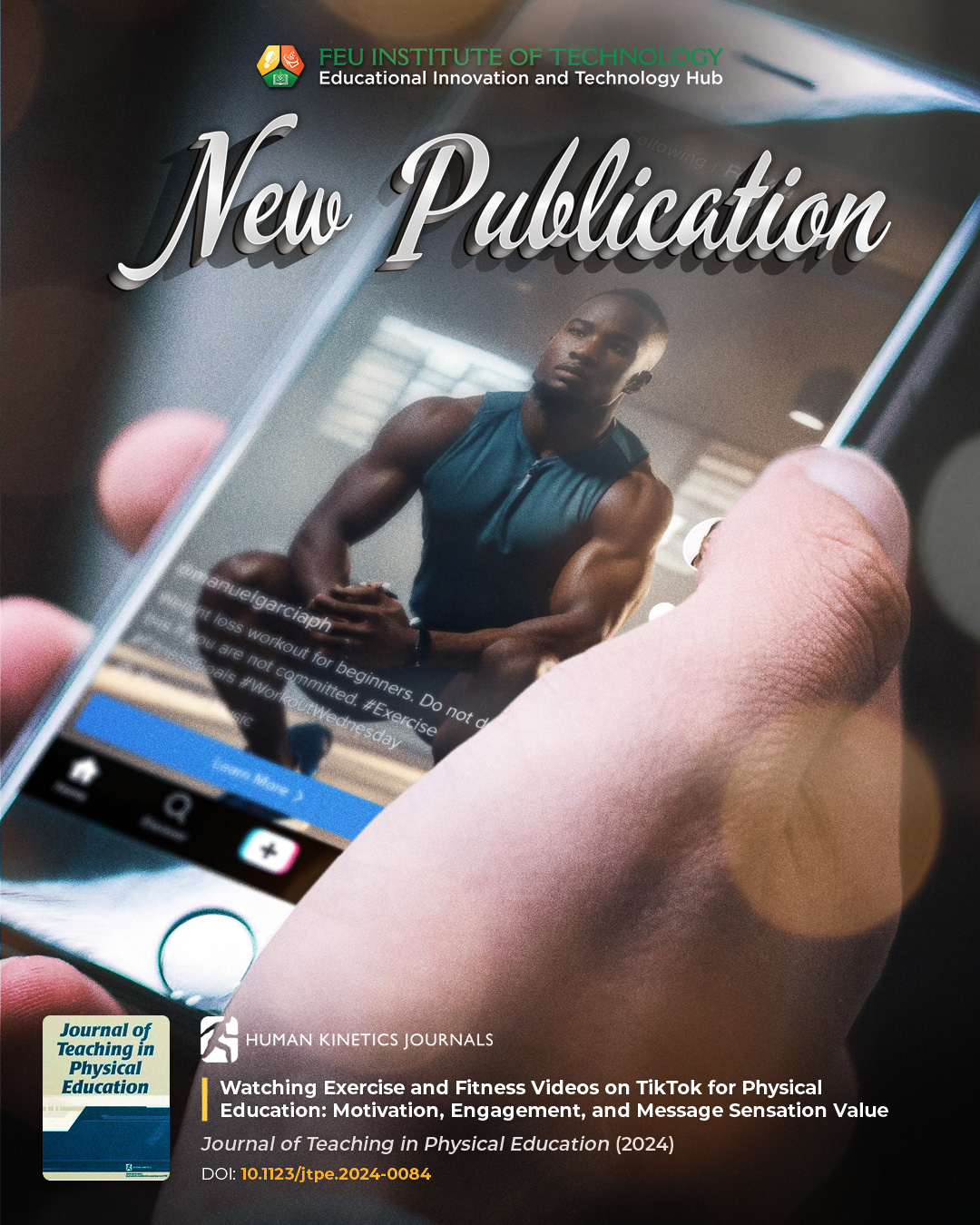Let’s Get Physical: How TikTok Videos Can Promote Physical Education
A new research publication examines the advantages of TikTok videos as a potential knowledge source and inspiration for students to embrace physical education.
November 4, 2024
Research
Physical education (PE) has long been vital to school curriculums worldwide, including the Philippines. Its significance extends beyond fostering physical fitness and health, as it plays a crucial role in developing well-rounded individuals. As many students learned, engaging in physical activities has numerous health benefits, including enhanced coordination, increased muscular strength, and improved cardiovascular health.
In recent years, there has been a growing trend that uses digital technology as an educational tool for PE. Some use wearable devices like smartwatches to promote physical activity and track progress, encouraging student participation. Another approach is through social media platforms like TikTok.
Several researchers discovered that TikTok had been a viable platform for nanolearning. It’s only logical to explore its potential in other areas of education, especially its potential to enhance engagement and effectiveness in promoting physical activity among youth.
A Significant Study On TikTok’s Potential
Dr. Manuel B. Garcia, the Founding Director of FEU Institute of Technology’s Educational Innovation and Technology Hub (EdITH), examined TikTok’s potential to engage students and perceive information in a different format through the study titled “Watching Exercise and Fitness Videos on TikTok for Physical Education: Motivation, Engagement, and Message Sensation Value.â€
Besides entertainment, social media has become popular among young individuals for getting health-related information. Dr. Garcia’s study aims to address the gaps in the available literature and broaden the understanding of how short-form video platforms like TikTok can enhance pedagogical practices in PE.

More About the Study
The study uses a quantitative approach to examine how PE students use fitness videos on TikTok. The research design was a descriptive cross-sectional survey, which collected data simultaneously to analyze their preferences, engagement levels, and message sensation values of fitness videos.
One of the study's primary goals was to discover PE students' motivations and engagement levels to understand why they enjoy fitness-related TikTok videos. Analyzing their responses determined their reasons were for inspiration, learning new exercises, and entertainment. The study also explored the connection between students' preferences for different types of fitness videos and their engagement levels. Results showed that students who enjoyed a particular style of fitness content were more likely to actively engage with it by liking, commenting, or sharing it.
Additionally, the research examined the perceived meaningful stimuli value (MSV) of various fitness TikTok videos. This measure assesses the potential of the videos to capture viewers' attention and evoke specific emotional and cognitive responses. The results indicated that while there were some variations in the MSV of different types of fitness videos, most students found these videos engaging and stimulating.
What the Study Found
The study's results discovered that PE students primarily use TikTok to watch fitness videos for entertainment. It aligns with previous research highlighting TikTok's role as a popular entertainment platform. However, the study also revealed that students are motivated by fitness videos, suggesting that the platform can serve as a source of inspiration for adopting healthier lifestyles. While male students use these videos for inspiration and physical motivation, female students often watch them as escapism.
Dr. Garcia’s study suggests PE classes could incorporate similar elements to make them more appealing. Students also tend to apply what they learn from these videos, like exercise routines and healthy eating tips. PE teachers could leverage TikTok for educational purposes by creating short fitness challenges or quick quizzes based on the content students watch.
Ultimately, the findings highlight TikTok's potential to enhance PE education through a nanolearning approach, where short-form videos can deliver engaging and informative content. The study also demonstrates the applicability of the Unified Goal Theory (UGT) and Motivational Self-Regulation (MSV) in understanding digital content consumption and engagement within the context of PE.
It offers practical implications for educators, providing them with strategies for integrating TikTok into PE curricula to enhance student engagement, motivation, and learning outcomes, thereby empowering them in their teaching journey.
Patricia Bianca S. Taculao-Deligero is a Bachelor of Arts in Journalism Graduate from the University of Santo Tomas. She has an extensive portfolio from working in various local media outlets, with articles focusing on lifestyle, entertainment, agriculture, technology, and local government units, among other subjects. Her specialty is in feature writing. She is also proficient in news writing.
